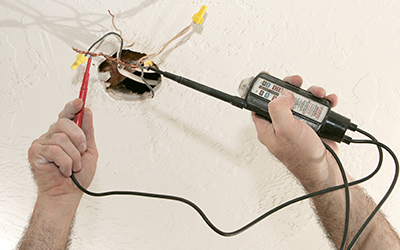
Trying a do-it-yourself renovation project can be an effective way to save on cash in some situations, but it’s not a good idea for every part of your home. The consequences of improperly executed electrical work can extend far beyond the immediate task at hand, compromising the safety and compliance of your home’s electrical system.
Knowing about the most common electrical code violations can help you spot and address safety concerns before they can jeopardize your property or health.
Most Common Electrical Problems
Without the right tools and expertise, handling electrical work can lead to all sorts of short- and long-term issues. In Energized Electric LLC’s experience, these are the most common electrical code violations we come across and how to identify them.
Get a Free Most Common Electric Violations Quote
Click below to leave your information and we will contact you!
Schedule your free estimate today!
Leave your information below and we will contact you!
"*" indicates required fields
*During normal business hours. After hours calls will be returned the next business day.
Incorrect Circuit Breakers
Circuit breakers are components designed to protect circuits from shorting out or becoming overloaded. Incorrect breakers that don’t match the electrical load requirement of your home can pose significant problems.
If the breaker’s amperage rating is too high, it may fail to trip during an overload or short circuit, increasing the risk of electrical fires. Conversely, if the amperage rating is too low, the breaker may trip frequently, leading to power interruptions and potential damage to connected devices. Common signs of an incorrect circuit include:
- Frequent tripping
- Overheating of the breaker panel
- Inability to handle your electrical load
Overcrowded Wires
Overcrowded wires refer to a situation where an excessive number of electrical wires are tightly packed within a confined space, such as an electrical box or conduit. When wires are overcrowded, they generate more heat, quickly degrade insulation, and may ultimately lead to electrical fires. Signs of overcrowding include:
- Difficulty fitting wires securely
- Visible compression of wires
- An inability to close the electrical box properly
If wires appear tightly packed, it may be valuable to reach out to a professional for an inspection.
Switches Without a Neutral Wire
Neutral wires play a vital role in electrical circuits, serving as a return path for current and ensuring the proper functioning of devices. If a switch lacks a neutral wire, it may increase your risk of electrical shock or compromise the performance of the connected devices.
Identifying a missing neutral wire can be complicated without a professional’s assistance. That said, older homes or those that have undergone DIY renovations are more likely to have this problem.
Lack of Tamper or Weather Resistance
Tamper and weather resistance are commonly overlooked by individuals who are not experienced in electrical work, but they’re just as essential as any other component in your system. These safety features are designed to protect against accidental electrical shocks or water leaks that could spark fires.
How to Avoid Electrical Code Violations
To avoid electrical code violations and ensure the safety and compliance of your electrical system, it’s best to collaborate with a licensed and insured contractor. A qualified professional possesses the expertise to navigate complex electrical codes, identify potential issues, and execute installations or repairs in accordance with industry standards.
At Energized Electric LLC, our team of skilled professionals is dedicated to upholding the highest standards of safety and quality in every project. Don’t compromise on the safety and integrity of your home—choose Energized Electric LLC for all your electrical needs.
Back to Electric Utility Services